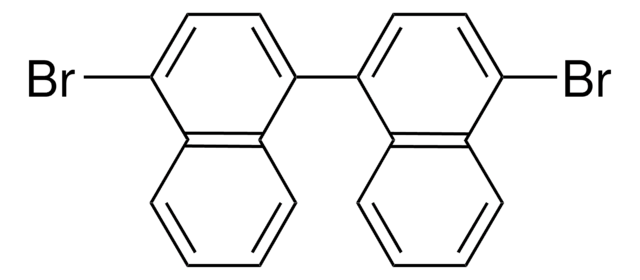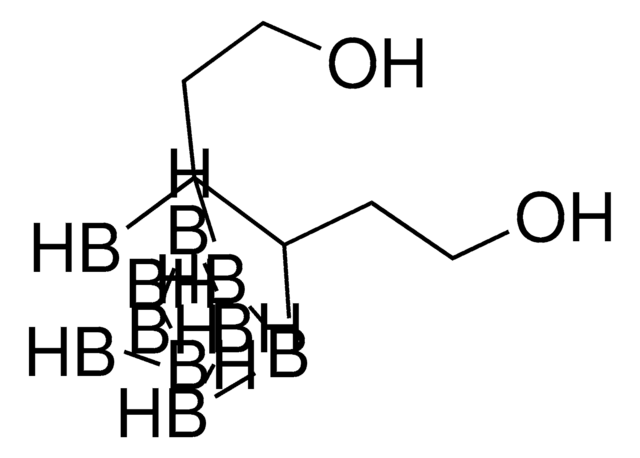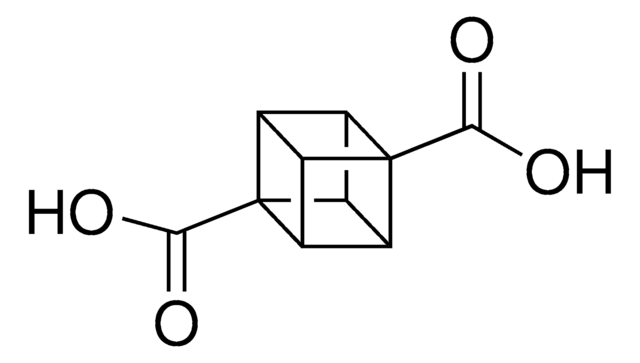288187
o-Carborane
98%
Sinônimo(s):
1,2-Dicarbadodecaborane(12)
Faça loginpara ver os preços organizacionais e de contrato
About This Item
Fórmula empírica (Notação de Hill):
C2H12B10
Número CAS:
Peso molecular:
144.23
Número CE:
Número MDL:
Código UNSPSC:
12352300
ID de substância PubChem:
NACRES:
NA.23
Produtos recomendados
Ensaio
98%
pf
260 °C (subl.) (lit.)
temperatura de armazenamento
2-8°C
cadeia de caracteres SMILES
[bH]1[bH][bH][bH][bH][bH]cc[bH][bH][bH][bH]1
InChI
1S/C2H12B10/c1-2-4-6-8-10-12-11-9-7-5-3-1/h1-12H/b2-1-
chave InChI
PWHTZDUTEHXWHV-UPHRSURJSA-N
Categorias relacionadas
Descrição geral
Electron deficient boron cage compounds with one or more carbon atoms as a ligand in the borane framework. The three common isomers are o-carborane, m-carborane and p-carborane 1The structure could be polyhedral or open cage.
Embalagem
Packaged in glass bottles
Palavra indicadora
Warning
Frases de perigo
Declarações de precaução
Classificações de perigo
Acute Tox. 4 Dermal - Acute Tox. 4 Inhalation - Acute Tox. 4 Oral
Código de classe de armazenamento
11 - Combustible Solids
Classe de risco de água (WGK)
WGK 3
Ponto de fulgor (°F)
Not applicable
Ponto de fulgor (°C)
Not applicable
Equipamento de proteção individual
dust mask type N95 (US), Eyeshields, Gloves
Escolha uma das versões mais recentes:
Já possui este produto?
Encontre a documentação dos produtos que você adquiriu recentemente na biblioteca de documentos.
Yin-Ping Wang et al.
Chemistry (Weinheim an der Bergstrasse, Germany), 23(8), 1814-1819 (2016-11-30)
Palladium(II)-induced selective B(4)-H activation of an o-carboranylthioamide has been developed. A tetranuclear palladium(II) complex has been obtained in high yield with excellent regioselectivity. DFT calculations have confirmed that the B(4)-borometalate is lower in energy than the corresponding B(3)-borometalate. The product
Temidayo O B Olusanya et al.
Biophysical chemistry, 247, 25-33 (2019-02-24)
Based on the promise of liposomes as convenient vehicles for the transport of boronated agents for the boron neutron capture therapy (BCNT) of cancer, this paper reports a method for the formulation and characterisation of stable o-carborane-loaded liposomes (ca. 80-100 nm)
Issei Takeuchi et al.
Colloids and surfaces. B, Biointerfaces, 159, 360-365 (2017-08-15)
Poly(DL-lactide-co-glycolide) (PLGA) has been widely used and studied because of its biocompatibility and biodegradability. Recently, the usefulness of nanoparticles using poly(L-lactide-co-glycolide) (PLLGA) having a higher glass transition temperature than PLGA was suggested. In this study, we investigated the availability of
Nossa equipe de cientistas tem experiência em todas as áreas de pesquisa, incluindo Life Sciences, ciência de materiais, síntese química, cromatografia, química analítica e muitas outras.
Entre em contato com a assistência técnica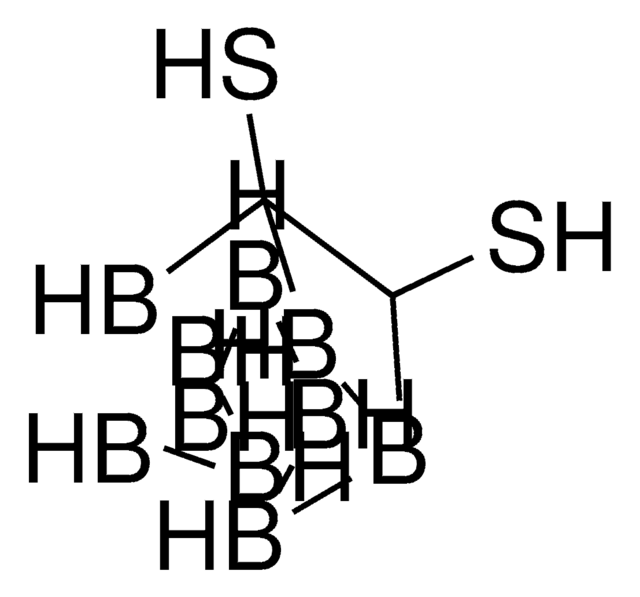
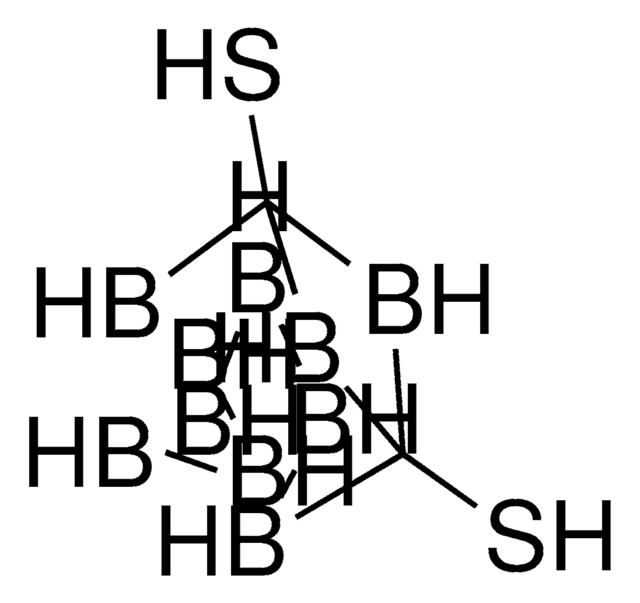

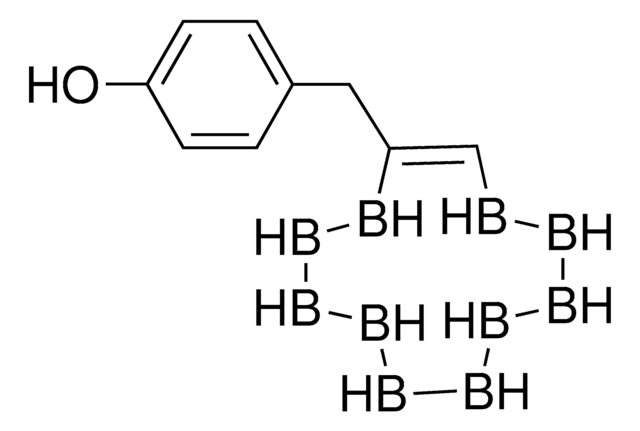
![2,2,6,6-Tetramethyl-4-[1-oxo-6-(triethylammonio)hexylamino]-1-piperidinyloxy bromide 95%](/deepweb/assets/sigmaaldrich/product/structures/398/827/e455c61a-b8fc-4800-9d17-107d734f6aa8/640/e455c61a-b8fc-4800-9d17-107d734f6aa8.png)

